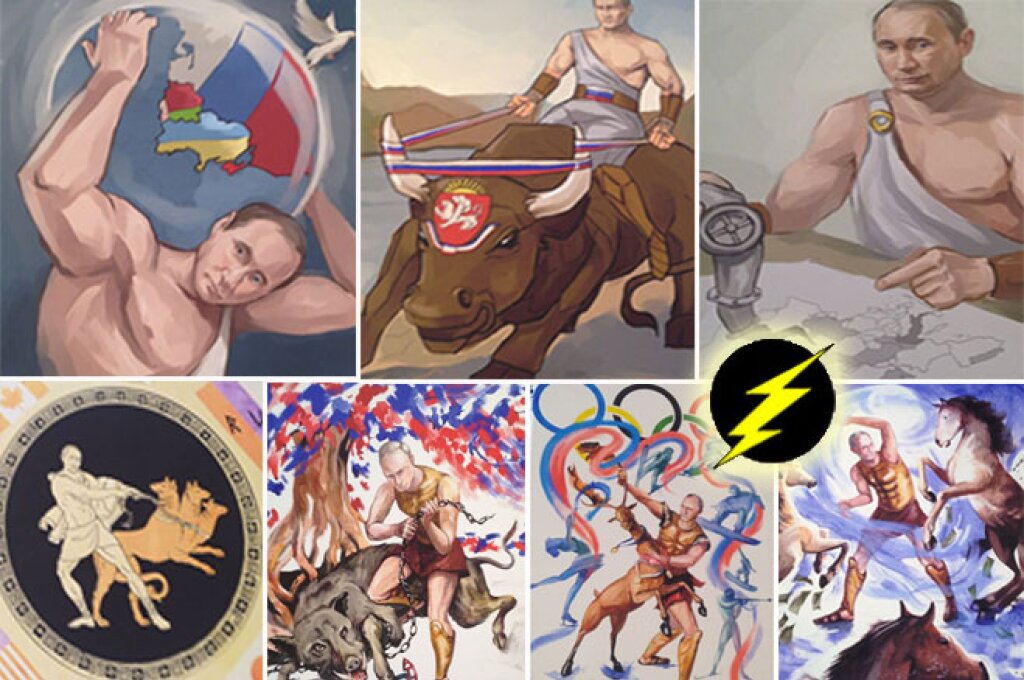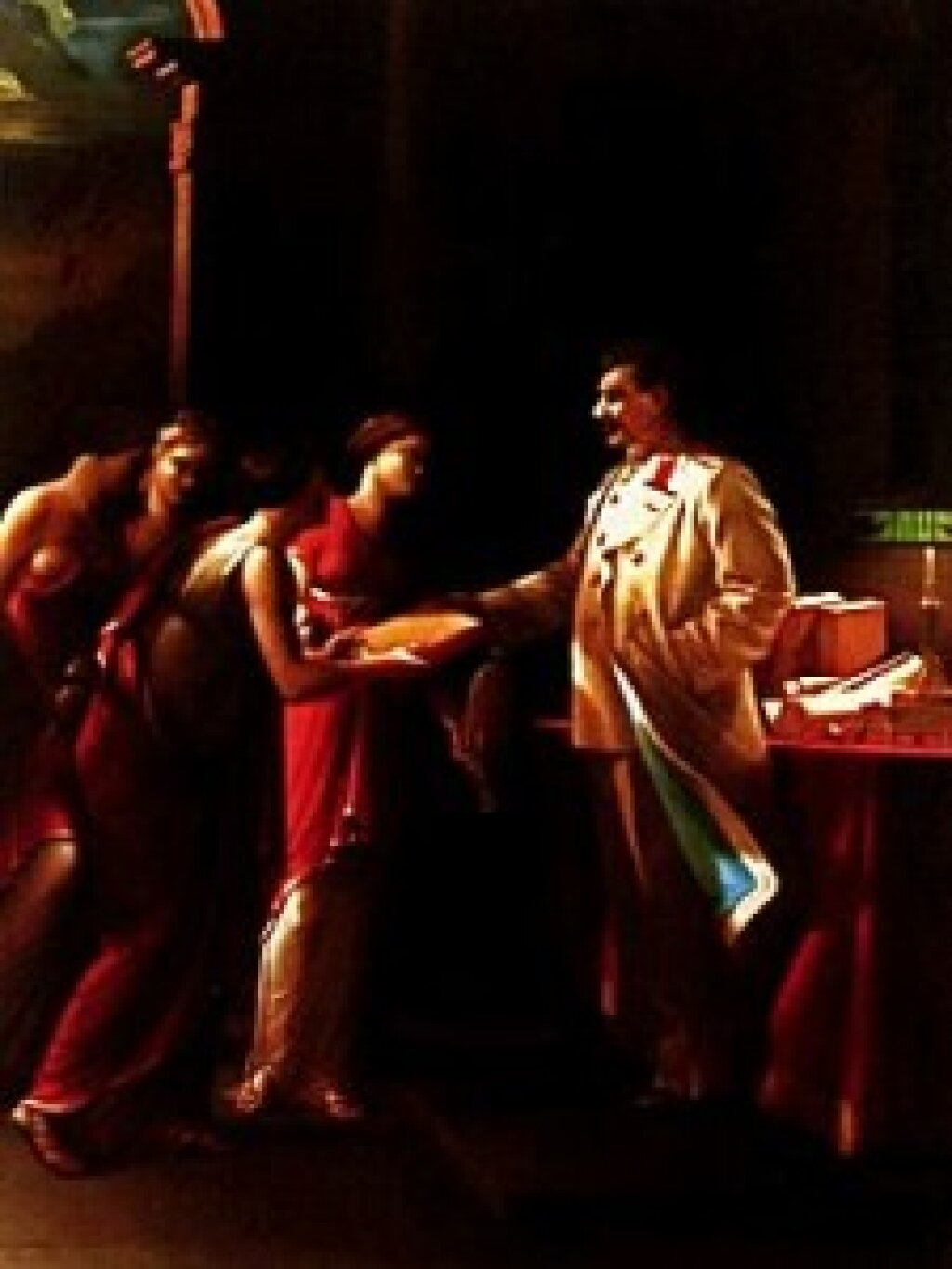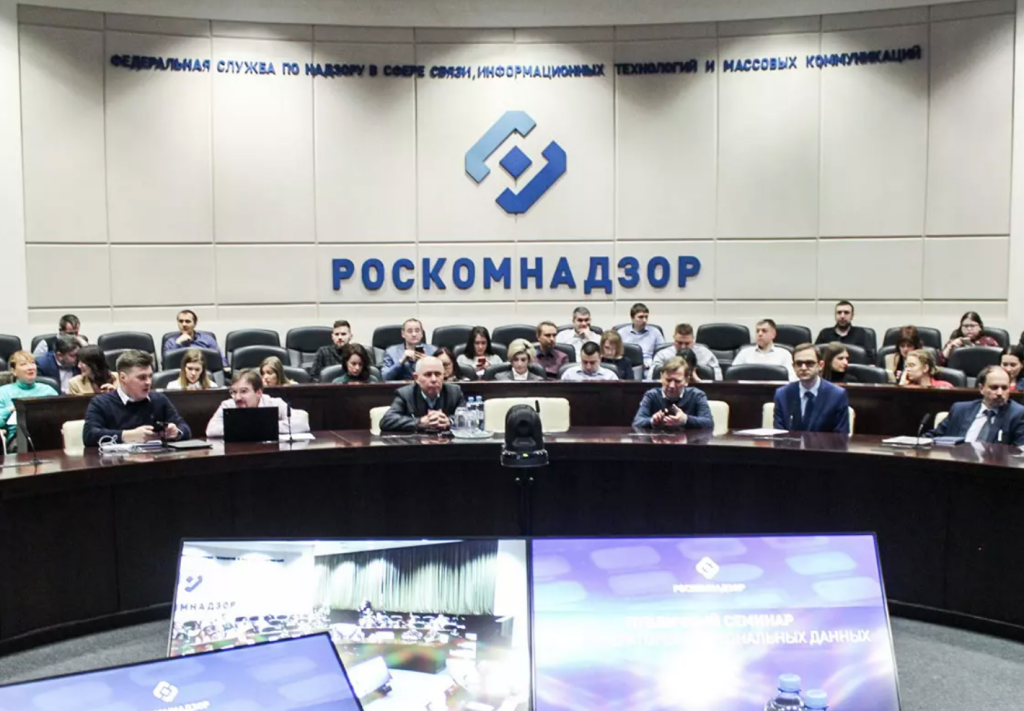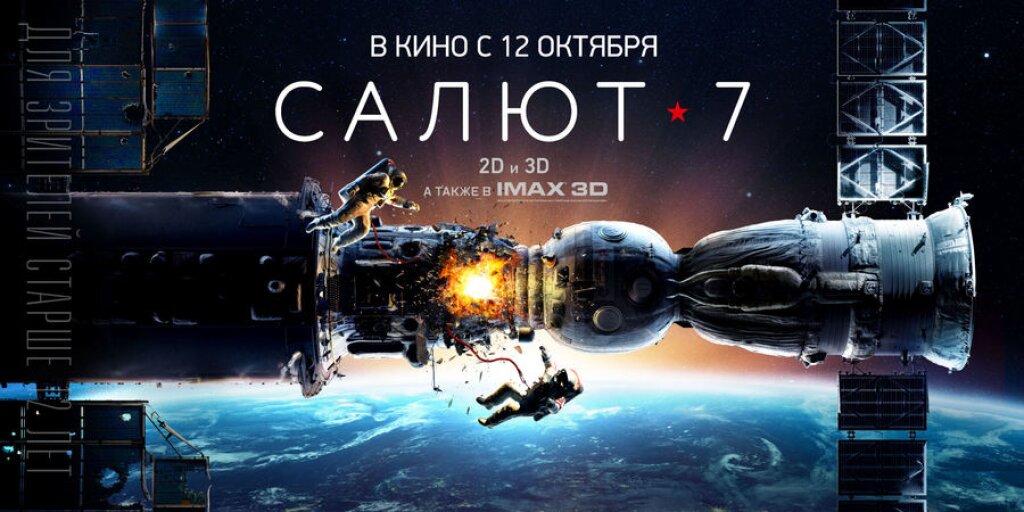Veronica Davidov is Assistant Professor of Anthropology at Monmouth University and co-editor of Laboratorium: Russian Review of Social Research
For Vladimir Putin’s 62nd birthday, he got a very special present: an art exhibit entitled “The 12 Labors of Putin.” The exhibit was announced by a Facebook group “The Group for Vladimir Putin’s Supporters” as an event that would feature works by designers and illustrators where Putin’s activities are compared to Heracles’ feats (in fact, feats, not labors, is the verbiage in the Russian translation of the Greek myth and the title of the exhibit). The exhibition’s organizers say on the Facebook page: “In an amazing fashion, the events of ancient tales of the mythological hero, Heracles, can be adapted to here and now, when the three-headed Cerberus evokes USA, when the defeat of the Stymphalian birds is putting the stop to aerial bombing in Syria, and the cleaning of the Augean stables is the fight against corruption.”
The accompanying legend (so to speak) that spells out what each image stands for also explains that the slaying of the Lernaean Hydra corresponds to the Russian response to Western sanctions, and the capture of the Cretan Bull represents the annexation of Crimea, in what appears to be a wordplay on Taurus and Taurida, which is the ancient Greek name of Crimea, and the Taurida Governorate, which was a historical governorate of the Russian Empire, comprising territories originally annexed from the Crimean Khanate (a vassal state of the Ottoman Empire), and included the Crimean Peninsula.
One of Russia's foremost public intellectuals, Alexander Genis, in commenting on this exhibit, recalled the 1982 painting that was an ironic commentary on Socialist Realist art by Vitaly Komar and Alexander Melamid--"Stalin and the Muses,” in which the Muse of Painting presents the Muse of History Clio, to Stalin. That painting, as Genis notes, "tore down the barriers of history, elevated the Cult of Personality to the infinite degree, and transformed their protagonist into a universal object of mockery."
Genis thinks that the new exhibit essentially does the same thing with Putin, but unintentionally. Genis’s thoughts resonate with a question that I keep returning to since reading about the exhibit (and perusing each image in great detail): is this ironic? Let me be clear--a projection of a kind of mythological masculinity has been a part of Putin's PR machine for a long time—from rescuing reporters from tigers to leading a flock of Siberian cranes in flight, to “finding” supposedly ancient Greek (!) amphoras during a dive, Indiana Jones-style, so the exhibit is not out of place in the sociopolitical context of contemporary Russia.
Pictures at an Exhibition
But there is something about this exhibit--the anonymity of the artists, the format of it as a "gift" for Putin's 62nd birthday—that obscures somewhat the machinery of its production and thus makes it more semiotically messy and ungovernable than, perhaps, was the artists' intention. So, regardless of the actual spirit in which this exhibit was produced, it serves as a useful prism for considering how reification and irony are folding in on themselves in a Russia where Putin’s approval rating is at an 84% all-time high and there are a dozen different designs of “Crimea Is Ours” T-shirts for sale.
Socialist Realism—which this series of paintings are either an homage to, or an example of, depending on how historically bound one considers Socialist Realism to be--as an art form has been widely regarded as "kitsch." Insofar as these portraits of Putin borrow from Socialist Realism in concept and execution, they, too, fall into that category. And kitsch--or however its producers would characterize it, since it is rarely a term of self-attribution-- performs a very particular form of affective labor. This is especially true of political kitsch: it both manufactures and demands a feeling of uncritical gravitas within its audience.
Kitsch works by clearing out a space that does not admit irony, and moments of intense and militaristic nation-building construct themselves as irony-free zones (as we may remember from the widely repeated "end of irony" narrative in recent American history, in the aftermath of 9/11). And the Russian zeitgeist follows all the standard tropes necessary for an “end of irony” moment—a high-stakes military operation, a narrative of threat to the very essence or integrity of the nation-state, a “clash of civilizations” framing of the conflict. The paintings do their patriotic part--they tether the controversial actions of Putin’s Kremlin to a popular and beloved mythological narrative—and not even to the whole story of Heracles, which is rather tragic and complex, and involves him murdering his entire family—but to that one arc of the story that unfolds like a videogame, and is generally excerpted and presented as a stand-alone tale in children’s books and film adaptations. In that, the exhibit recasts the Russian audience as children. And childhood, as a cultural construct, is supposed to be another irony-free zone.
And yet it is hard to miss the ironies of this particular exhibit. It is hard to overlook the fact that in this moment of Russian import restrictions on Western goods as a response to international sanctions, the premise of the exhibit pivots around the symbolic import of a foreign hero from Ancient Greece, conventionally considered the “birthplace” of Western Civilization. Furthermore, it comes to mind that this visual paean to Putin’s masculinity, in a moment of heightened, state-enforced heteronormativity, portrays him as a mythological character who had his share of romanticized and aestheticized homosexual dalliances. Or in other words, as one of my students uttered, when I showed some of the images of the exhibit in class, during a unit on ideology, “this is very gay.” It is also interesting that a good third of Hercules’ labors consist of, well, theft. Is there a layer of subconscious commentary there? Is there a chance that the anonymous art collective is actually trolling Putin?
Irony can be a powerful tool of political protest, but it also does not have to be intentional (although I still hold out a tiny hope that “12 Labors of Putin” will be revealed as intentionally ironic/conceptual art installation). The content of this exhibit locates it in the corpus of ongoing semiotic labors (or feats) that are affirming this moment of Russian statehood and state-building as an irony-free zone. But at the same time, the meta-message of this exhibit shows how the Putin presidency produces itself as a farce.




